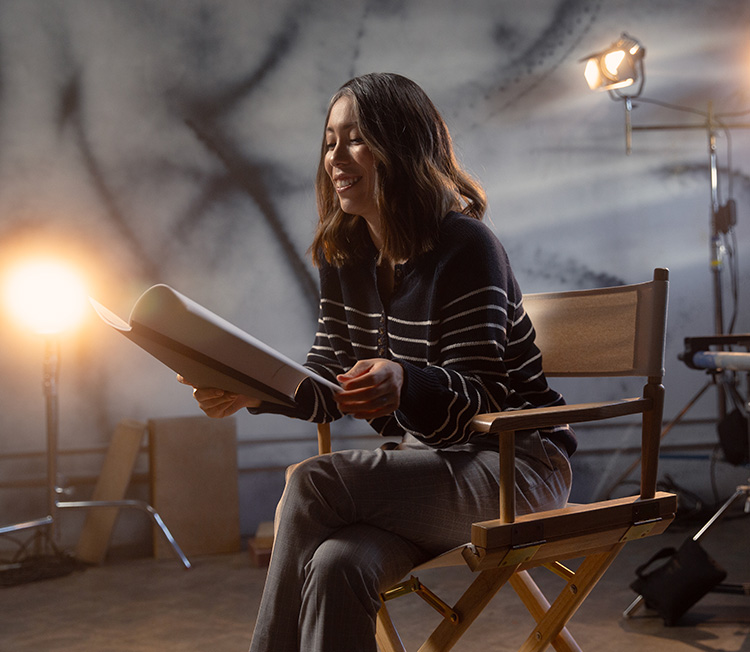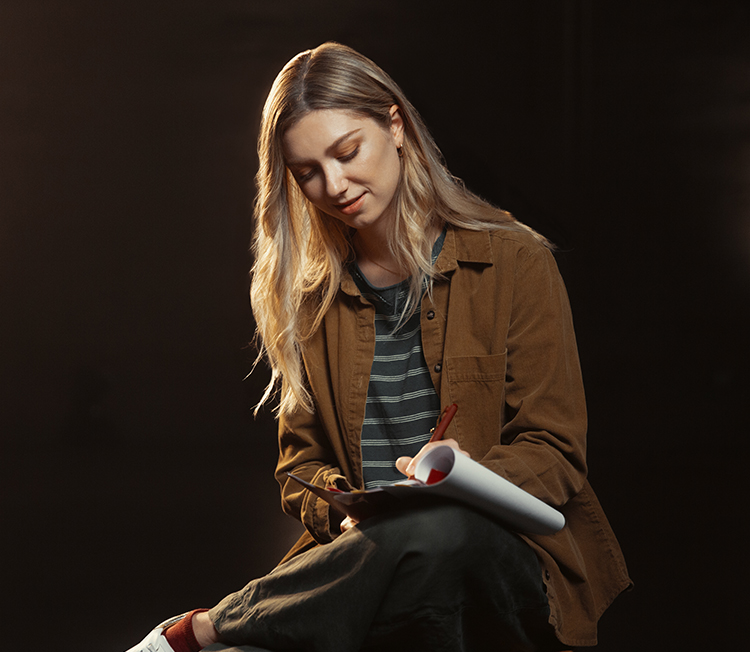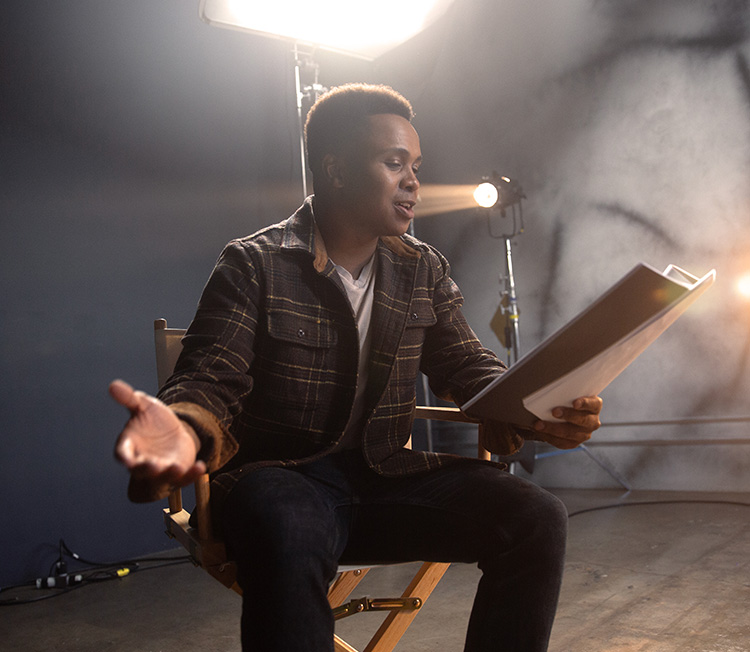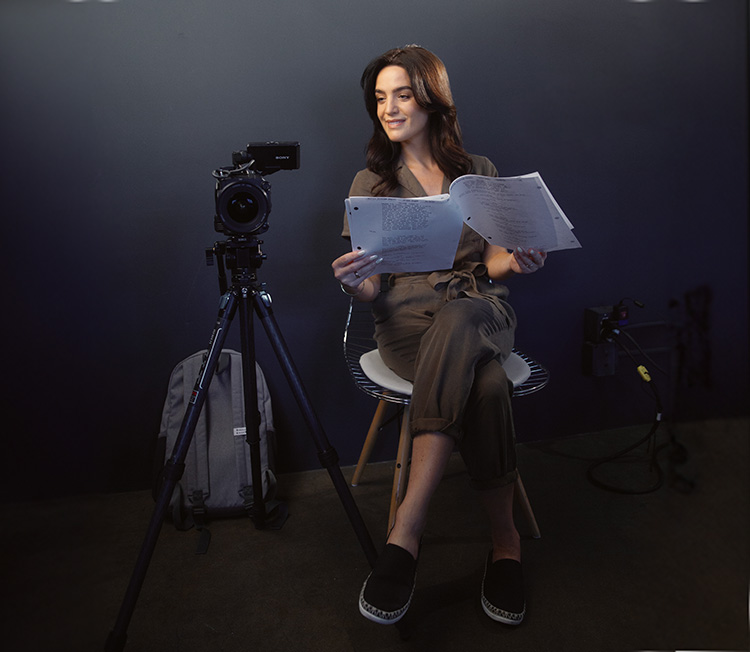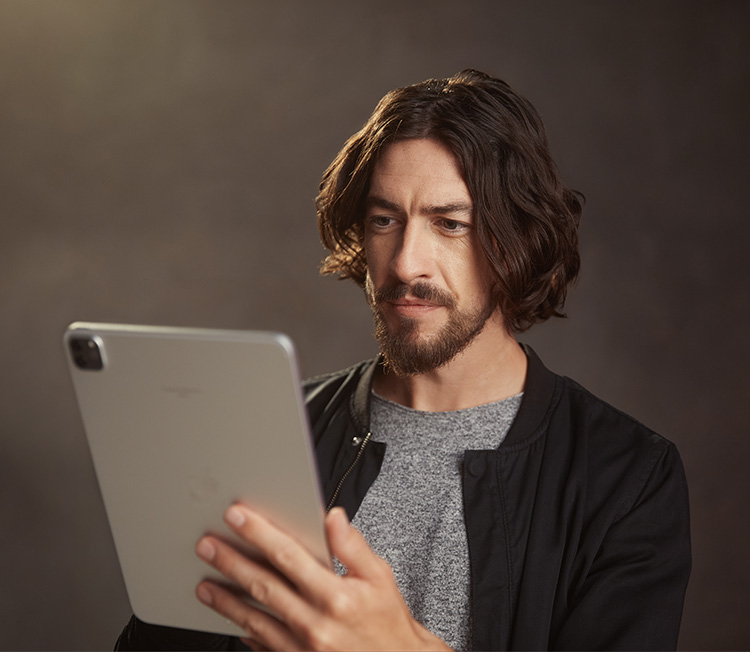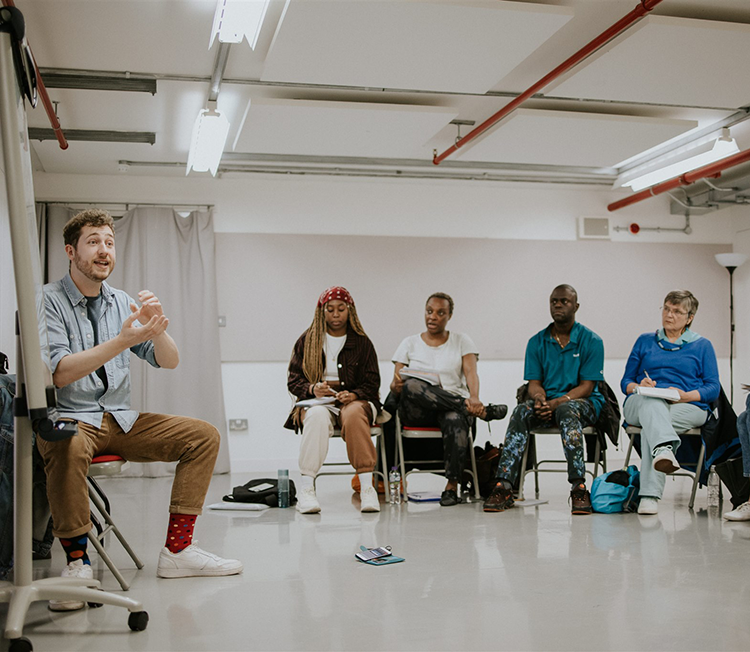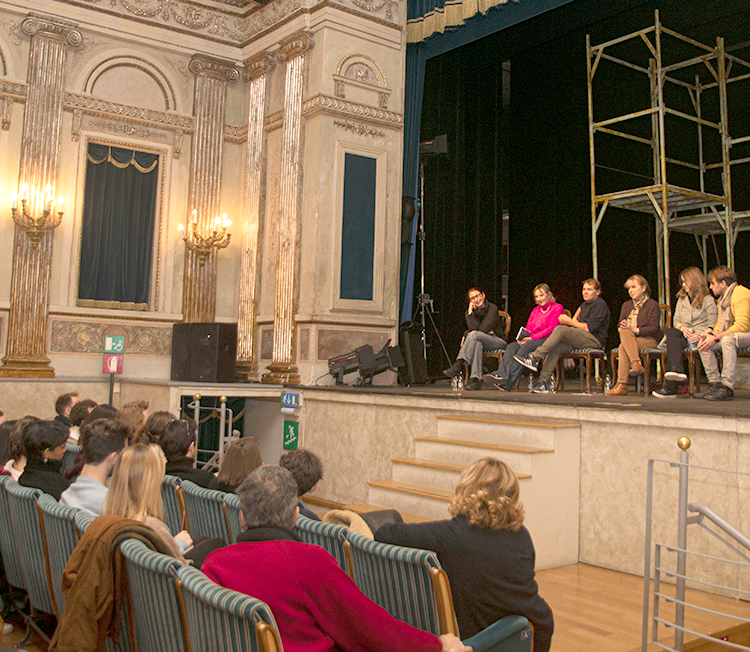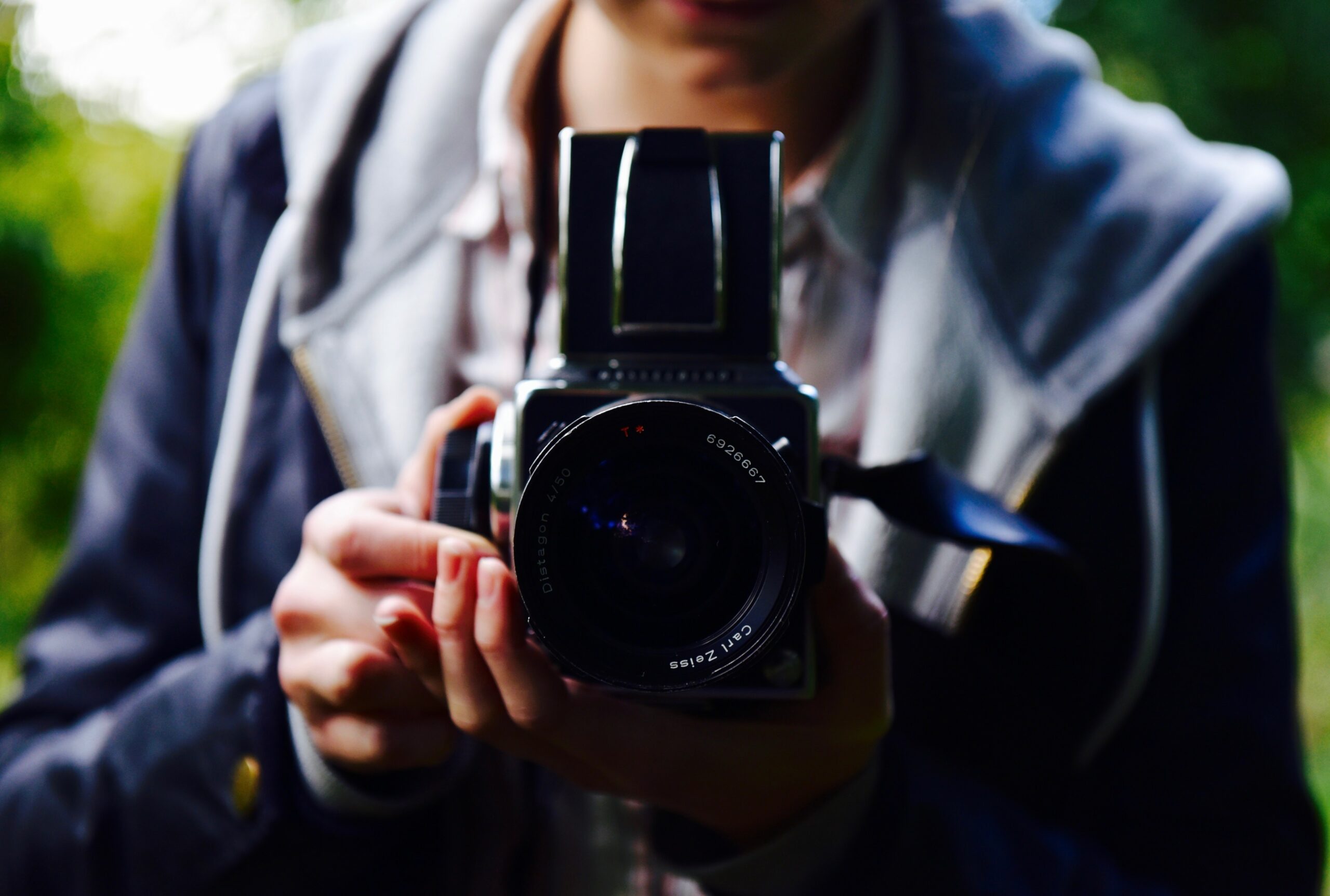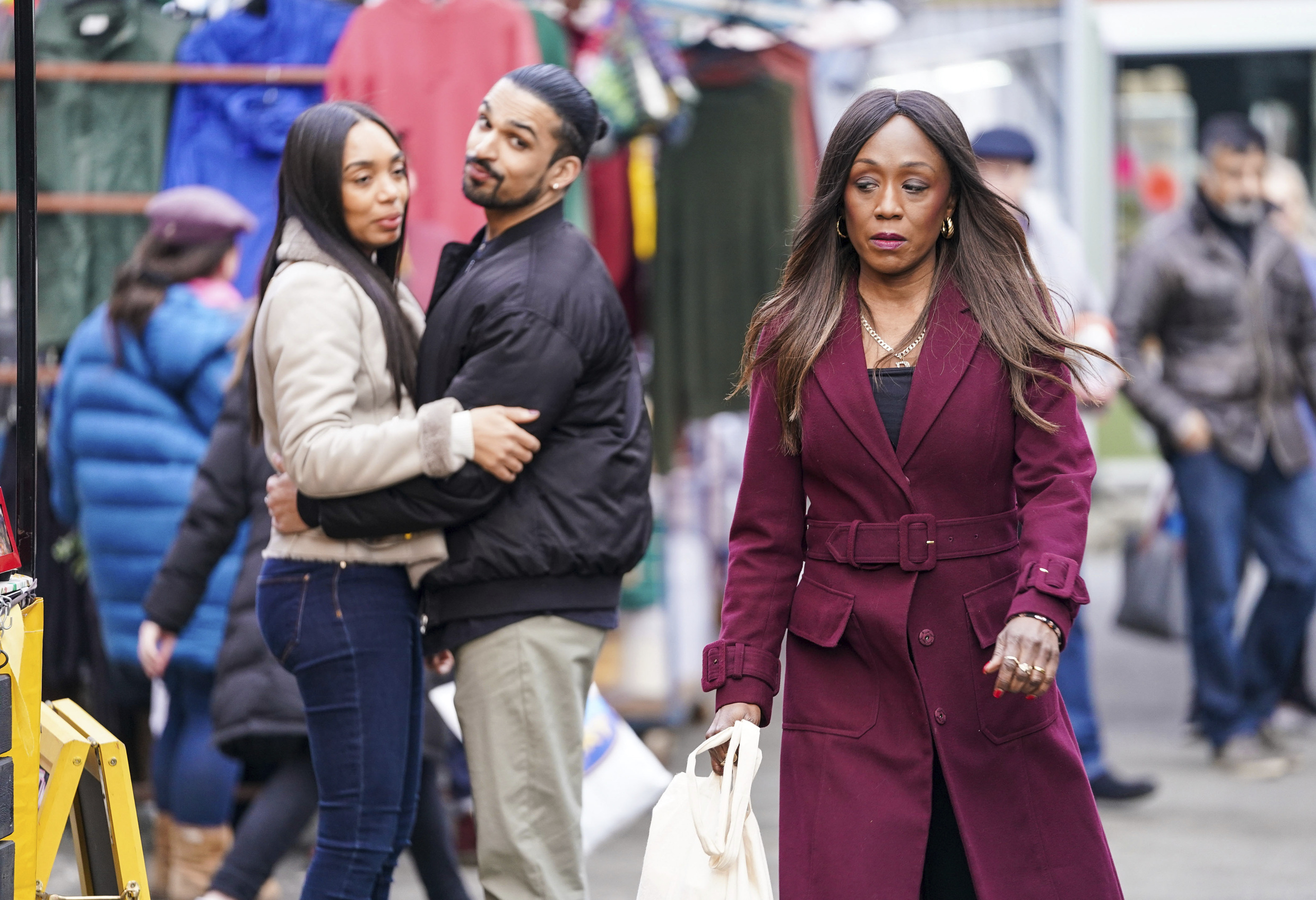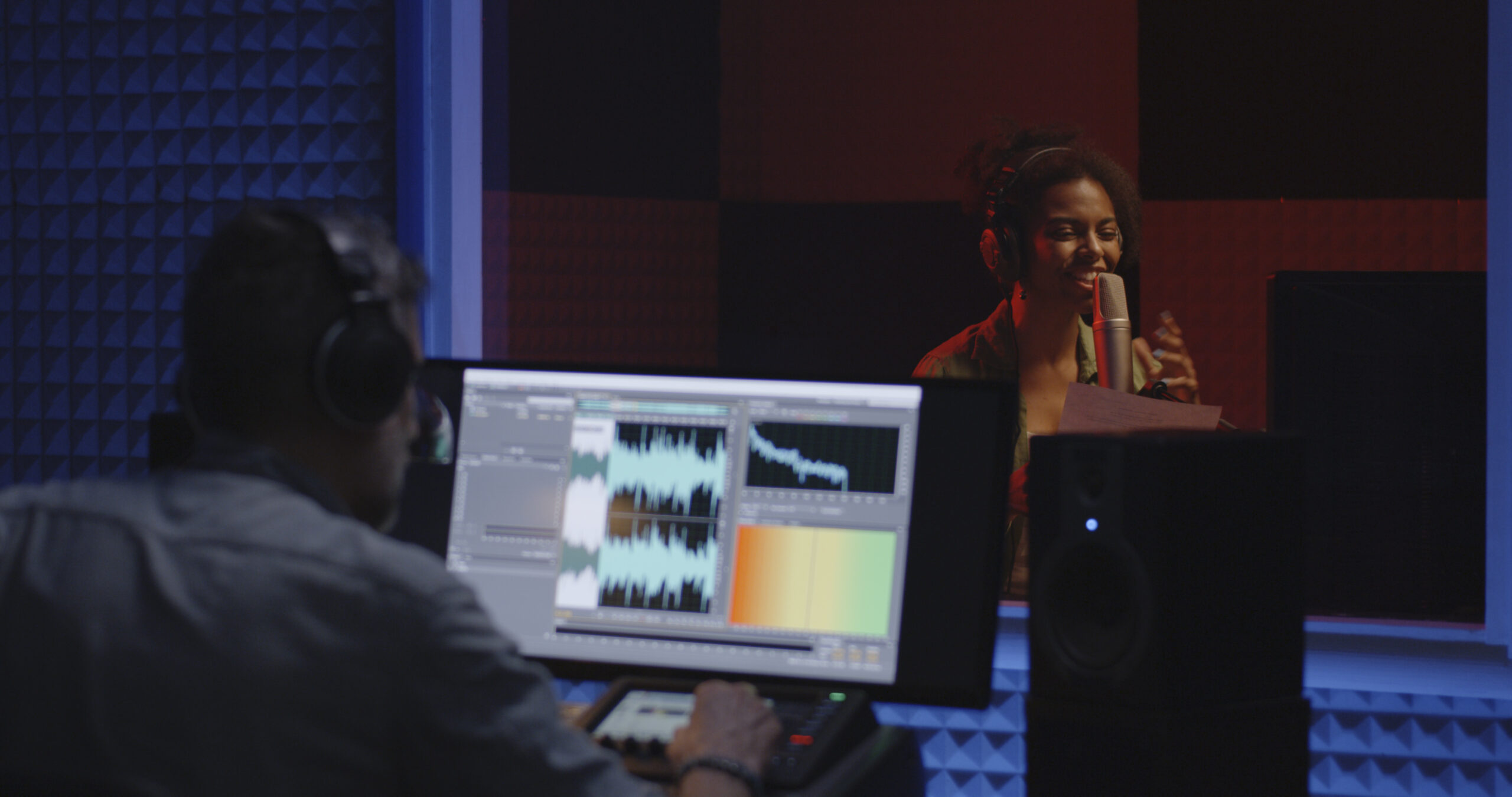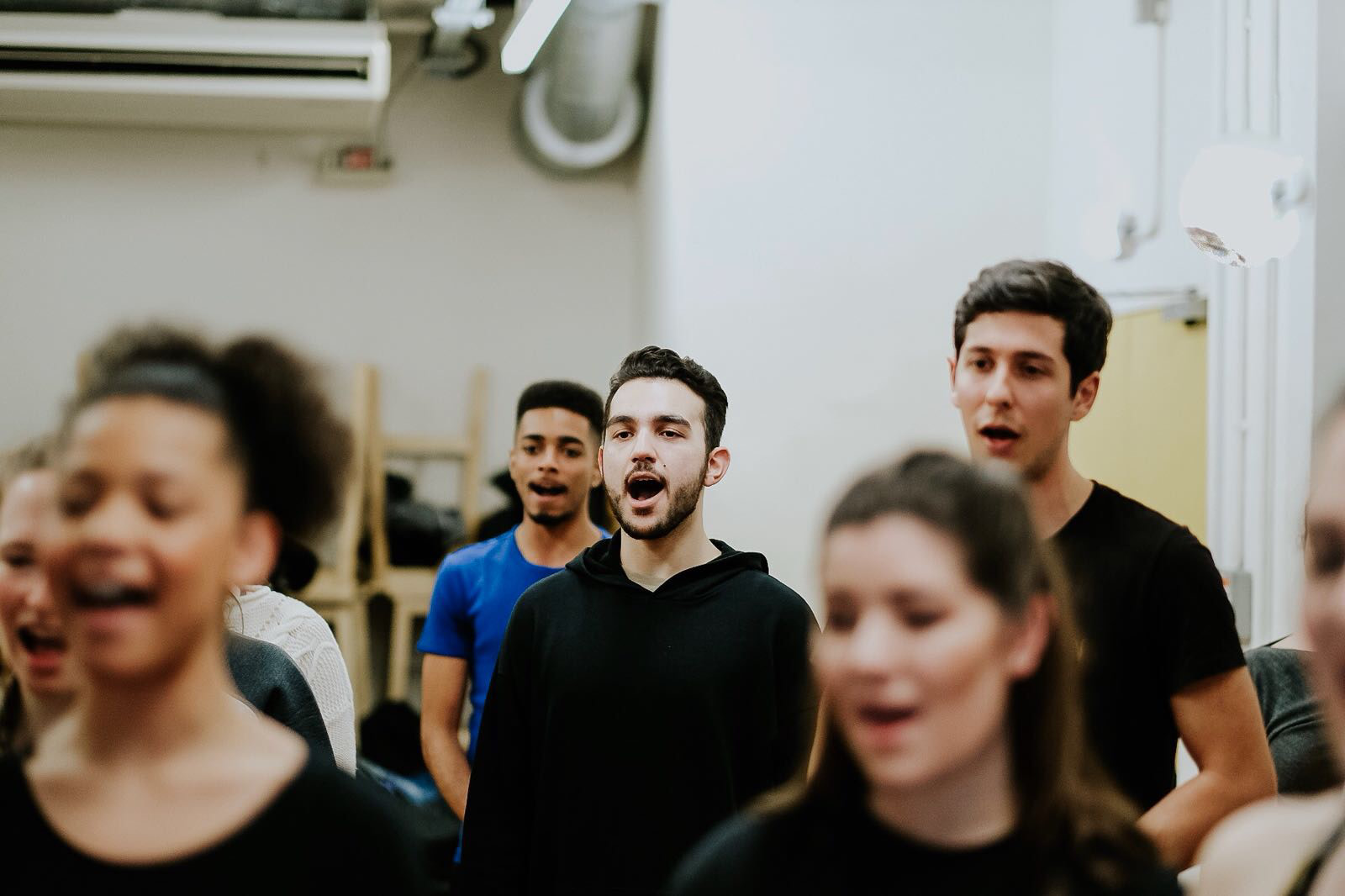What to expect from your first session with a headshot photographer and how to successfully present yourself to the industry!
As if you don’t already have enough to do between mastering your showcase and Stanislavski, before long someone is bound to tell you to go out and get your headshot taken. Spotlight’s Content Editor, Christina Care, was sent to experience a headshot session the way all grads do – without prior experience! – and she reports back to give you the insider guide to a successful first shoot:
I don’t put people into character because I think it complicates things. I do know that a lot of photographers do that, but we’ve all got our different ways. That’s not mine. I wouldn’t dream of putting anyone into character.
So, you’re a performer. The first thing you’re often asked to do when getting into the biz is to get your headshot taken. I’ve never really had my photo taken, so Spotlight sent me to Sheila Burnett, APHP Headshot Photographer with 25 years of experience, to find out more about what it’s like to go for your first shoot. If you’re feeling awkward, shy or unsure, or if you’re about to graduate and you’ve got no idea what to expect from a photographer, then this one’s for you (because I definitely am most of those things!). What follows is my afternoon with the lovely Sheila, and all the things you need to know about getting the most out of your first headshot session.
Lots of things about headshots must have changed over the course of your career – do you think headshots are still as important for performers as they were when you started taking them?
A lot of people come here, especially students, and they come here with a passion for performing. They know that the first step is that they need to get their headshots done. Today, everybody can take a photograph. But I think everyone who wants to take it seriously is going to do it the right way – get it done professionally!
So that hasn’t changed – it’s definitely still an important first step. Are there common concerns that you find when actors first come to you?
I hear [people say that] they aren’t photogenic a lot. In a way, it’s my job to get that part of you that is photogenic, because everyone in my eyes is photogenic. That’s why I like to start with a warmup first of all, to earn your trust, and then it’s just one of those things – it’s kind of just intuition from there.
What do you think about someone getting headshots for the first time – do you have any thoughts about what should they emphasise? Is it natural personality? Or playing a certain character?
It’s person by person. It’s so interesting – you have no idea who is going to come. How they’re going to be, whether they’ll be nervous or excited. I think you just play it by ear, but there are standard things – if somebody just comes with a black and a white t-shirt, you kind of very kindly say, ‘I think we can add to that’. There’s an old-fashioned thought that it’s just about the head. But theatrically when you wear different things you feel different, you act differently.
I never put anybody into character – ever! – but I encourage attitude. So, if we’ve got a 22-year-old boy who comes in a white t-shirt or a black t-shirt, he’s going to feel very different in a leather jacket versus a suit jacket… it’s automatic. But I don’t put people into character because I think it complicates things. I do know that a lot of photographers do that, but we’ve all got our different ways. That’s not mine. I wouldn’t dream of putting anyone into character.
How do you determine what works for the person? Where do we even start with a headshot shoot?
It depends. If I were to take your photograph now, I’d ask you what your playing age is – I would say that you could look quite young, but you also have a bit of authority about you. I always ask the age. How old are you?
Thank you, I think! I am 26…
I’d say 26 is the older end of your playing range, and you could play 19. Because you’re not presenting yourself to me as an actress but as a journalist, I’d tell you that I’d shoot you as the ‘professional woman’. I’d keep the hair as it is and I’d ask you if you’re having a good hair day. It shoots much younger outside, because of the light. You can stand and lean and fold the arms – get a bit of attitude. That would be younger, and a good warm up to get you used to being photographed. Which is very important – as a rule actors don’t like to be photographed! As a rule, people kind of don’t like it.
Then I’d say to you we’d do the outside shots and indoors we’d think about a more professional side. I have extra items of clothing just in case, I’d put something on you and light you for indoors. Usually at the end of the session I’ll ask if the person wants to see the photos, make sure we got everything you needed. I send the proofs by email, but I also still print photographs.
That’s unique! Not many people still print photographs…
Turns out it is. But it’s because back in the analogue days, that was the only way you could get a picture. I always do a print, have a check. I just like doing it – it’s part of the process for me.
Do you ever still use the darkroom?
No, no, gone gone gone! Digital is fantastic.
Do you think the style has changed a lot, along with the technology?
A lot. The basics are the same for me and what we do. The difference is that because I did my transition from analogue to digital about 12 years ago, I still think in black and white because I had all those years in the darkroom. Those days you’d have somebody come, you’d take two rolls of film, 72 proofs in black and white. With digital, you can as easily take black and white as colour.

 Do you think black and white photos still have a place?
Do you think black and white photos still have a place?
One of the main questions I get asked is whether it should be colour or black and white. That question is asked less and less now, because it’s assumed it’s colour. People still love black and white, but agencies will be happy just with colour. We always give the option and I always say that the black and white is traditional but also very effective, dramatic and classy.
So sometimes it can be worth selecting black and white. What sorts of photos do you think make for the best black and white shots?
The lighting is very dramatic with indoor shots, so there can be less detail in the hair, which when monochromatic, is almost the same as the background. The outdoor shots have loads more detail, which lends itself to black and white in both detail and composition, in my opinion.
[See left: Above we have the outdoor, and below we have the indoor photograph. Sheila’s suggestion would be to use the outdoor shot in this case, the indoor being much less detailed!]
People still love black and white, but agencies will be happy just with colour. We always give the option and I always say that the black and white is traditional but also very effective, dramatic and classy.
Do you think it’s important to have headshots re-taken regularly?
I don’t think it matters for a while – I had a woman named Jane, she showed me her photographs that were always very girly. She was in her 40s. There’s a tendency in a woman to keep shooting her young, and I don’t really follow those rules. She hadn’t had her photograph taken in about 7 years. She just knew that she had to and to get away from the girly thing. I think [her new photos show] a woman in a strong position that doesn’t have to play girly.
So, it’s more important to ensure the photos convey what you’re aiming to play – the stage of life you’re at, your casting type, etc. As long as the photos are in line with that…
Exactly.
How do you go about bringing out the range of the performer, without putting people into character?
I’ll say something like, ‘Ok, let’s see your acting range.’ I have a little list here and I just glance at it sometimes. For blokes, it could be scientist, evil scientist, rebel, spy, doctor, spy, judge, soldier… a lot of young boys come with their t-shirts and it’s never occurred to them they could look great in military green and then as soon as they do it’s soldier, captain, WW2 fighter pilot… it’s just being playful. For girls: young mum, journalist, professional woman, doctor, copper, siren, judge… it’s something I just keep in my own imagination. I would say with you, certainly ‘professional woman’, ‘doctor’… maybe ‘copper’?!
I never thought I had an inner ‘copper’! I’ve seen the first ever edition of Spotlight, and back in those days, ‘character actors’ had photos taken in character…
Ah yes, with a pipe etc.! Amazing, I know.
Even today, we do occasionally have performers holding props etc., in their photos. What are your thoughts on that?
No props. What I’d probably do is just show the performer a bunch of my other photos and tell them it’s not really the UK style [to hold props]. It’s not professional. The aim is to be an actor, not something out of Hello! Magazine.
What about other defining features of the individual – like tattoos? Are those more acceptable?
Sometimes you get somebody who has been working out with great muscles, or they’ve got tattoos, and if one feels trusting, which one generally does, I’ll say, ‘Ok let’s see these tattoos!’ And then we can capture them too.
What are your thoughts on getting makeup done before a headshot session?
Every so often you’ll have someone ask if they can bring someone to do makeup – that doesn’t usually happen. As a rule, the fashion is to keep it natural. We’re only 20 minutes from the West End so if you really want it, I will book you in to Bobbi Brown and they do your makeup, you just have to buy a lipstick. For a makeup artist, it can be £130 for the session. But the fashion is to keep the look natural, and it doesn’t really come up very often. I’ve got lots of numbers of makeup artists if [a performer] really wants it done.


How about for men – do you have any tips on grooming, particularly with facial hair?
For the men, they can shave halfway through for another look. Often people come with a sort of “designer stubble”, and it really works well – adds to the definition of the jawline – and they’ll always look younger when they shave. They want to show different looks. Every so often you’ll get someone with a beard and they’ll shave the whole thing off and it’s a total transformation!
What about touch ups – is this standard procedure?
You always do a little bit of touching up, you’ve got to – I do [the touch ups] myself. It’s still a natural look.
[See left: Sheila’s images before and after they are corrected – the image is still natural, but minor touch ups are included (blemishes, etc) as well as brightening!]
Last question! Can you tell me a bit about the Association of Professional Headshot Photographers (APHP)? What’s the significance of choosing a photographer who is a member?
I joined [the APHP] last year – they are quite new. The APHP make sure there’s a kind of excellence, some kind of standard that should be met.

Thanks to Sheila for her time and patience with a very inexperienced subject – she ensured I felt relaxed and at ease throughout the session. To get in touch or see more of Sheila’s work, take a look at her website. She offers a discount to Spotlight members. You can see more APHP members listed here.
If you have any first person experiences that you’d like to share with Spotlight, you could be published on our site – just get in touch with your ideas here or email me at christina.care@spotlight.com.
Image credits: Sheila Burnett.

